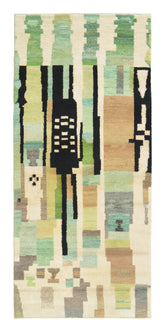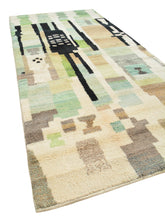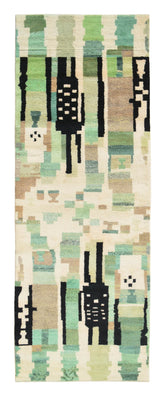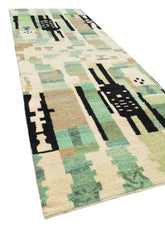History Of Moroccan Rug Weaving

Roots dating back to the 7th century, also known as the Paleolithic Era, Moroccan Rugs were traditionally hand-made and introduced to the world by the indigenous Berber or Amazigh tribe. Many think the rugs were created for decorative purposes when, in fact, the Berbers made them to survive the extreme weather of Morocco’s Atlas Mountains which they inhabited.
Feet freezing, Berbers decided to weave rugs, using wool to cover the ground to keep their feet warm. The utilization of wooden tools and raising livestock began right at the time when the Moroccan rug idea emerged, and the Berbers got the wool from their livestock. Moreover, the thickness and heaviness of the rug were utilized as a blanket to give support to the Berbers through cold nights, and a shield over their back and shoulders for protection against the falling snow.
Even in the sweltering climate of the Sahara Desert, the Berbers used the lighter and thinner version to fit and adjust to the hot environment. Throughout the decades, Moroccan rugs started to switch from a survival and protection Purpose to beautiful decoration.
In our modern era, the rugs are somehow still used for their original purposes in an environment where the weather is not very moderate. However, the vast majority of today’s generation is showcasing them in their houses. People recognize and understand that a rug is more than just a form of art or decoration. A beautiful rug carries cultural, historical, ancestral, and sentimental value and connection, so people display and keep them in their homes with pride.
To create a Moroccan rug, you will need to go to extreme lengths in order to end up with a work of art in your hands, as well as time and patience. The process begins with acquiring wool from a local sheep herder and then sending it to the weavers, so they can wash it, clean it, dry it and spin it into yarn.
Traditionally, natural dyes such as flowers or spices or powders are then added to the yarn in a variety of different colors and brightness. Afterward, we do the weaving part which can be done in a plethora of ways. Every tribe and person have their own preferences when it comes to the methods, however, these can be from knots to flat weave, to a mix.
Lastly, the rug gets washed many times and left in the open air to naturally dry out. Moroccan Rugs are absolutely stunning with their utterly unique patterns, brightness, and symbols. They can add some glow up to your houses, so if you’re thinking of buying one or are uncertain where to buy one, you can look through our website to find and shop many vintage Moroccan rugs that come in so many colors, brightness, and shades.





